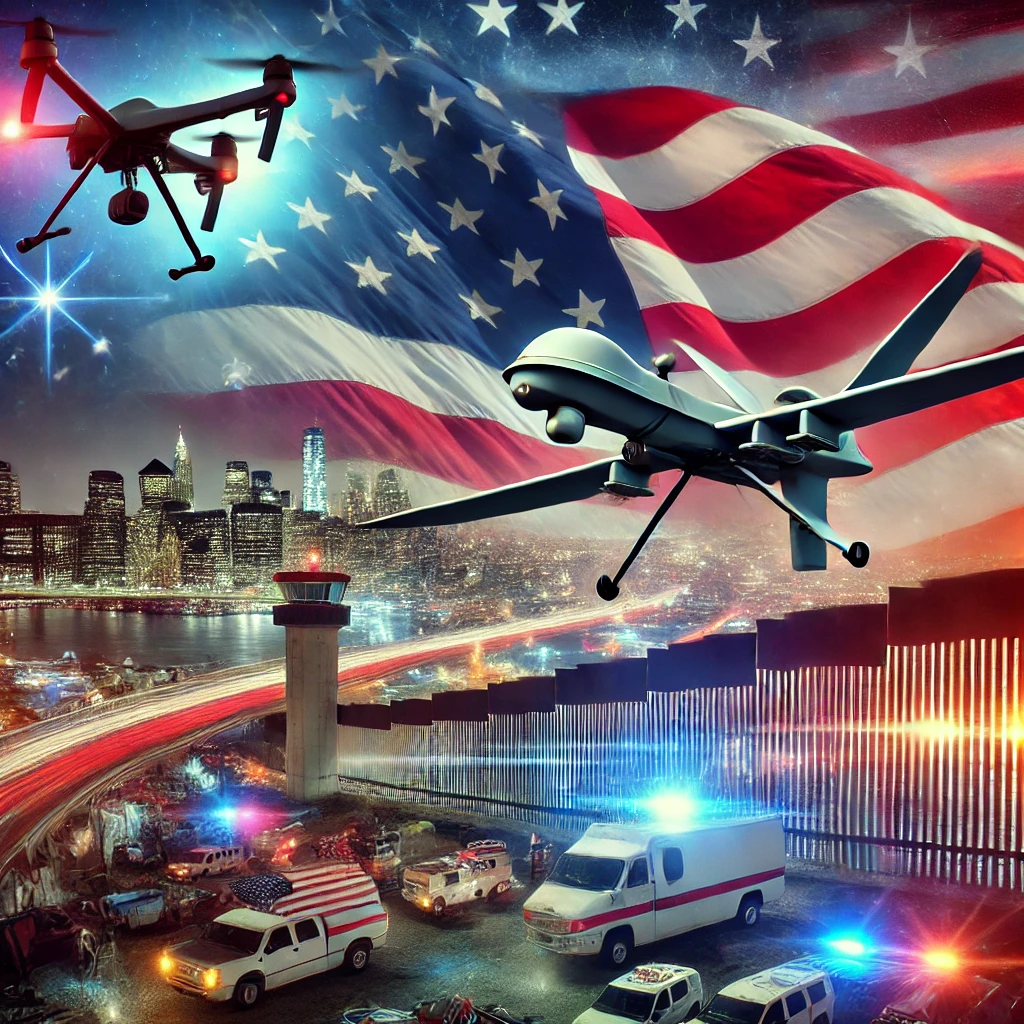The calendar turned to 2025, but the shadows of uncertainty linger. The Broken Arrow White Paper, released January 9, 2025, pulls no punches. It warns of the unthinkable: a refurbished Soviet-era nuclear device, poised and ready within U.S. borders. The document, a grim synthesis of HUMINT, OSINT, and SIGINT intelligence, paints a stark picture of America under siege. It’s a call to vigilance, a plea for action, and a sobering reminder of vulnerabilities in an increasingly complex world.
The Threat Unveiled
The White Paper is not light reading. It outlines a chilling reality, pointing to a series of events that hint at a coordinated and collaborative attack plan. The porous southern border. Unverified attacks—some dismissed as random violence, others shrouded in bureaucratic inertia. Mysterious drone sightings. Fog events with potential CBRNE (Chemical, Biological, Radiological, Nuclear, and Explosive) implications. Together, these fragments form a mosaic of menace.
At the heart of the report lies the specter of a nuclear WMD, smuggled into the homeland, refurbished from the Cold War’s forgotten arsenals. Intelligence analysts, piecing together disparate threads, argue the device is not just theoretical. It’s real, operational, and potentially catastrophic.
A Chain of Events
New Year’s Day was not celebratory for all. Two Collaborative Coordinated Complex (CCA) VBIED (Vehicle-Borne Improvised Explosive Device) attacks rocked undisclosed locations within CONUS (Continental United States). While details remain classified, whispers of significant casualties and chaos underscore the severity.
Elsewhere, smaller incidents ripple through the national consciousness. A Las Vegas bus hostage situation, dismissed as an isolated act of desperation, now takes on darker hues. The Queens nightclub shooting, attributed to gang violence, raises new questions. And the I-85 bomb threat, initially treated as a hoax, demands a second look.
Then there are the drones. Silent, persistent, their presence defies explanation. Are they reconnaissance tools? Delivery systems? Their true purpose remains elusive but ominous.
The Fog of War
January 5 saw reports of strange fog enveloping sections of the Midwest and California. Initially written off as meteorological anomalies, the fog events bear the hallmarks of something more sinister. The Broken Arrow White Paper hints at potential CBRNE testing, a chilling possibility that transforms weather into weaponry.
Simultaneously, Los Angeles grapples with a wave of coordinated arson. Flames consume entire neighborhoods, adding a layer of chaos and confusion. Are these fires a distraction? A test? Or part of a broader strategy to stretch emergency services thin?
A Vulnerable Homeland
The White Paper doesn’t mince words about America’s weaknesses. The southern border, it argues, is a sieve, allowing not just migrants but potential threats to flow unchecked. The increasing sophistication of PoliStab (Political Stability) teams operating domestically raises alarms. These groups, trained in destabilization tactics, exploit societal divisions, eroding trust in institutions and governance.
Economic strain and political polarization add to the pressure. In such an environment, the introduction of a nuclear device would not just be a physical blow but a psychological and cultural one. The White Paper underscores the devastating synergy of fear, division, and devastation.
A Calculated Strategy
The authors of the White Paper argue that these threats are no coincidence. They’re part of a broader strategy, one designed to exploit America’s blind spots. The report’s most likely scenario aligns with strategic military objectives: deploy the refurbished nuclear device in a way that maximizes impact while minimizing immediate attribution.
A major metropolitan area would be the logical target—not just for its population density but for its symbolic value. The means of delivery, analysts suggest, could range from drones to VBIEDs. The goal is not just destruction but paralysis: to shake America’s confidence in its own safety and security.
Recommendations for Action
The White Paper is not merely a catalog of doom. It’s a blueprint for action. Among its recommendations:
- Strengthen Border Security: Address the porous southern border with urgency, integrating advanced surveillance and rapid response teams.
- Enhance Intelligence Sharing: Improve coordination between federal, state, local, and private intelligence entities to identify and neutralize threats.
- Expand CBRNE Preparedness: Equip first responders with training and resources to handle chemical, biological, radiological, nuclear, and explosive scenarios.
- Public Awareness Campaigns: Educate citizens about recognizing and reporting suspicious activities without succumbing to paranoia.
- Harden Critical Infrastructure: Bolster defenses around nuclear facilities, power grids, and transport hubs.
A Call to Unity
The Broken Arrow White Paper ends with a sobering reminder: America’s greatest strength is its resilience. The nation has faced existential threats before and emerged stronger. But resilience requires unity, vigilance, and decisive action. In a world of asymmetric warfare, where enemies exploit every weakness, the time for complacency is over.
The fog may be lifting, but the threats remain. America’s path forward is fraught with challenges, but it’s a path the nation must walk together. The stakes are too high for division. The price of inaction is too great. It’s time to face the threats head-on, armed with the hard truths of the Broken Arrow White Paper and the enduring spirit of a nation that refuses to yield.

Leave a Reply